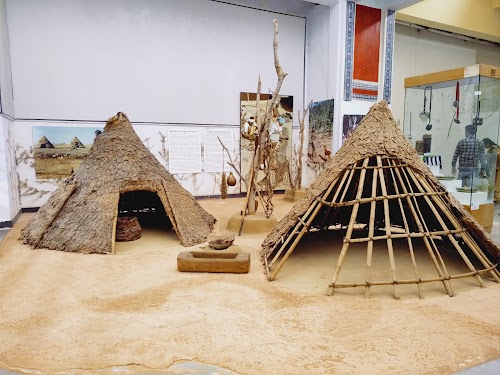
Manav Sangrahalaya (Museum of Mankind)
Bhopal, India
- Attend cultural performances.
- Explore tribal habitat recreations.
- Learn about tribal art and crafts.
- Participate in workshops and demonstrations.
- Photograph traditional houses.
- Visit the Veethi Sankul indoor museum.
Known for:
Description:
Immerse yourself in the rich tapestry of Indian tribal life and culture at the Manav Sangrahalaya, also known as the Indira Gandhi Rashtriya Manav Sangrahalaya. This unique open-air museum showcases the diversity of India's indigenous communities through meticulously recreated tribal habitats and life-size exhibits. Wander through villages representing different regions, complete with traditional houses, tools, and artifacts. Experience the sights, sounds, and spirit of rural India in a captivating and educational setting. It's a fantastic place to learn about the traditions, art, and lifestyles of various tribes, making it a must-visit for anyone interested in anthropology, culture, and history. The museum's serene setting on the banks of the Upper Lake adds to its charm, providing a peaceful escape from the city's hustle and bustle. Explore the vibrant displays and gain a deeper understanding of India's cultural heritage.
History:
Established in 1977, the Manav Sangrahalaya was conceived as a center for anthropological research and the preservation of India's diverse cultural heritage. The museum's initial focus was on collecting and documenting tribal art and artifacts. Over time, it evolved into an open-air museum, showcasing life-size recreations of tribal habitats from across the country. Indira Gandhi, the then Prime Minister of India, played a significant role in its development, leading to its renaming as the Indira Gandhi Rashtriya Manav Sangrahalaya. The museum's collection has grown to encompass a wide range of exhibits, representing various aspects of tribal life, including agriculture, crafts, rituals, and social structures. Today, it stands as a premier institution for anthropological studies and a popular tourist destination, attracting visitors from around the world.